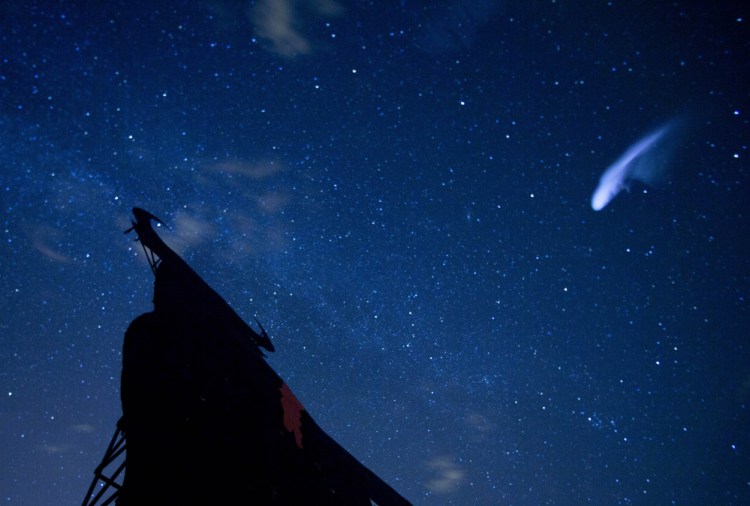Years ago, in the Pleistocene, I spoke with the great physicist Freeman Dyson about the search for extraterrestrial intelligence in the universe. He posited that we’d find the aliens with our telescopes – that we’d see something that was not natural.
Dyson, of course, is famed for his conjecture that intelligent civilizations would build some kind of megastructure around a star to capture and use its energy. Still, such a Dyson Sphere would be just one potential megastructure. Astronomers have long understood that advanced civilizations, in theory, should be detectable through some anomaly in the radiation emitted by a star.
The Kepler Space Telescope detected a star, KIC 8462852, with an unusual light pattern. The light from the star dips dramatically at irregular intervals. That’s not the pattern seen in stars with transiting planets. Thus one conjecture is that this could be from a swarm of alien megastructures, like lots of solar panels.
Penn State astronomer Jason Wright, who is involved in SETI research, told the Atlantic: “Aliens should always be the very last hypothesis you consider, but this looked like something you would expect an alien civilization to build.”
But it’s also what you expect the universe to throw at you, repeatedly: stuff you can’t quite figure out at first glance.
Anyone remember pulsars?
In 1967, Jocelyn Bell Burnell and Anthony Hewitt discovered a mysterious pulse of electromagnetic radiation coming from the same location in the sky. The object emitted a pulse every 1.3 seconds. Stars don’t do that. One possibility: some kind of alien beacon. But further research concluded that it was an entirely new kind of object: a rapidly rotating, extraordinarily dense “neutron star.”
Kepler may simply have detected a star swarmed by comets. Not nearly as interesting an explanation. Or there may be something causing that unusual pattern of light emission that is equally mundane.
That doesn’t mean we shouldn’t keep studying this thing. As Phil Plait puts it at Slate: “I think it’s pretty obvious this scenario is, um, unlikely. But hey, why not? It’s easy enough to get follow-up observations of the star to check the idea out. It’s low probability but high stakes, so probably worth a shot.”
Keep in mind that we do a lot of projecting when we talk about alien civilizations. So we can imagine that we humans would want someday to harness the energy from our star via elaborate mega-structures.
But long-lived civilizations may go the hippie route, soft paths, keeping it simple. One argument against the “comet swarm” theory is that it would be kind of lucky to see a star right in the midst of a comet swarm. But you could extend that to the alien-megastructure conjecture: By chance, we’d be seeing the civilization at the time of its technological mania.
Discuss!
Copy the Story LinkSend questions/comments to the editors.



Success. Please wait for the page to reload. If the page does not reload within 5 seconds, please refresh the page.
Enter your email and password to access comments.
Hi, to comment on stories you must . This profile is in addition to your subscription and website login.
Already have a commenting profile? .
Invalid username/password.
Please check your email to confirm and complete your registration.
Only subscribers are eligible to post comments. Please subscribe or login first for digital access. Here’s why.
Use the form below to reset your password. When you've submitted your account email, we will send an email with a reset code.